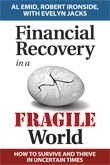Last updated: April 11 2012
Canada’s export dilemma: Wrong markets, wrong products
Over the past 125 years, whenever Canada has faced a recession or depression, exports have led the country into recovery. But this time around, says Mark Carney, governor of the Bank of Canada, exports have not measured up.
"During the most intense phase of the Great Recession ó a nine-month period beginning in the fall of 2008 ó the level of Canadian exports plunged more than 16%, or more than twice the total drop during the previous two cycles,î Carney recently told an audience in Waterloo, Ont. "By the end of last year, exports still remained roughly 8% below their pre-recession peak.î
To put that in perspective, considers the Canadian international trade merchandise numbers recently released by Statistics Canada. In 2011, Canada's exports totalled $457.6 billion, an increase of 13% from 2010, as prices rose 8.6%. Imports increased 10.3% from 2010 to $456.4 billion, mainly on the strength of volumes, which were up 8.3%. That gives Canada a 2011 trade surplus of $1.2 billion, Canada's first annual trade surplus since 2008.
So, Canada may be on the right track but it is not there yet. Indeed, Canada has steadily lost global market share. "Our performance has been the second worst in the G-20,î Carney said in his speech. "Our share of the world export market fell from about 4.5% to about 2.5% and our manufactured-goods export market share has been cut in half. Consistent with this drop, employment in Canada's manufacturing sector has fallen by more than 20%, representing nearly half a million jobs.î
So, what is to blame for Canada's export challenge? Certainly the strong Canadian dollar has played a role but it seems Canada has also been selling the wrong products in the wrong markets. Our exports are concentrated in slow-growing advanced economies, particularly the United States, rather than fast-growing emerging markets. Since the recession, emerging economies have accounted for about two-thirds of global economic growth and half of the growth in global imports.
In Emerging Asia, says Carney, "a massive new middle class is being formed, growing by 70 million people each year and representing a fast-rising share of global demand for all types of goods.î
StasCan figures suggest some movement in the right direction. Although exports to the U.S. increased 10.4% year over year to $330.1 billion in 2011, the U.S. accounted for 73.7% of total exports in 2011, down from 87.1% in 2002. Exports to the United Kingdom increased 14.8% in 2011 to a record high of $18.8 billion and exports to China reached $16.8 billion, up 26.9% from 2010.
Crude petroleum dominated exports to the U.S., up 32.3% to a record $68.4 billion. Precious metals and alloys represented more than 60% of Canadian exports to the United Kingdom and in trade with China, exports of iron ores and concentrates recorded the largest gains. Wood pulp and similar pulp remained the top export for a second consecutive year.
Carney's prescription for reversing Canada's export record? Refocus, retool and retrain, he told his business audience.

